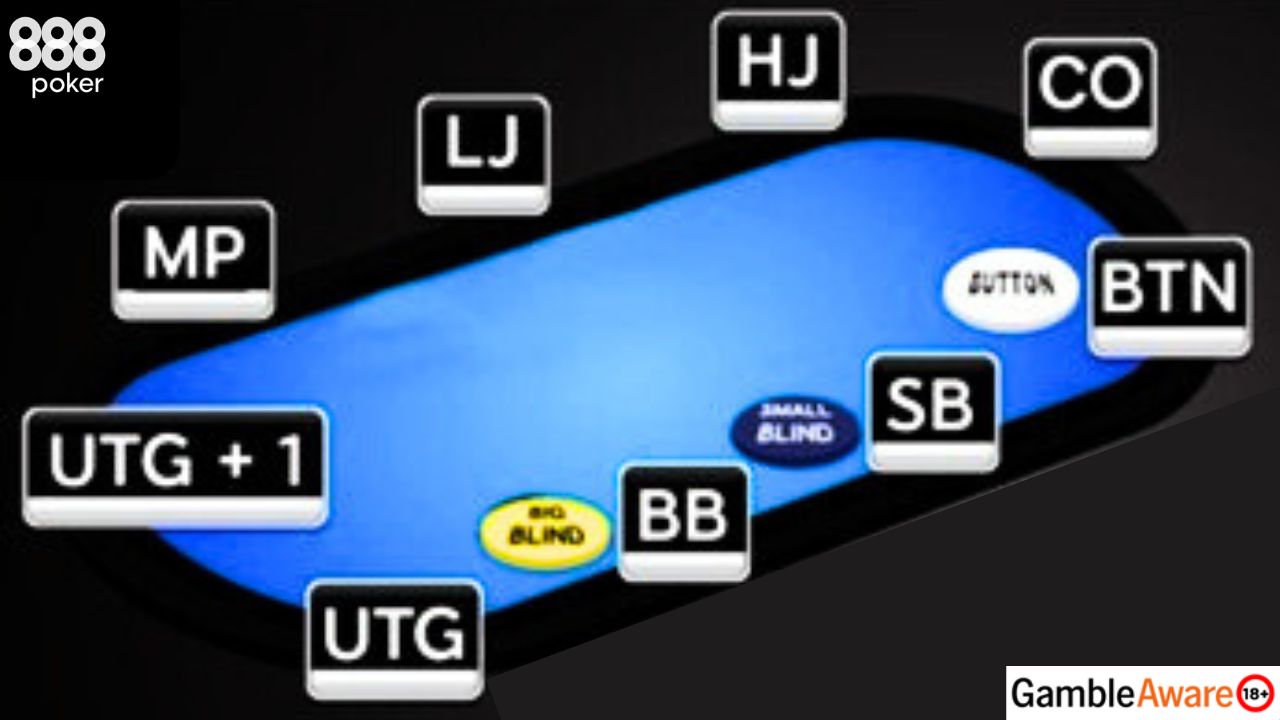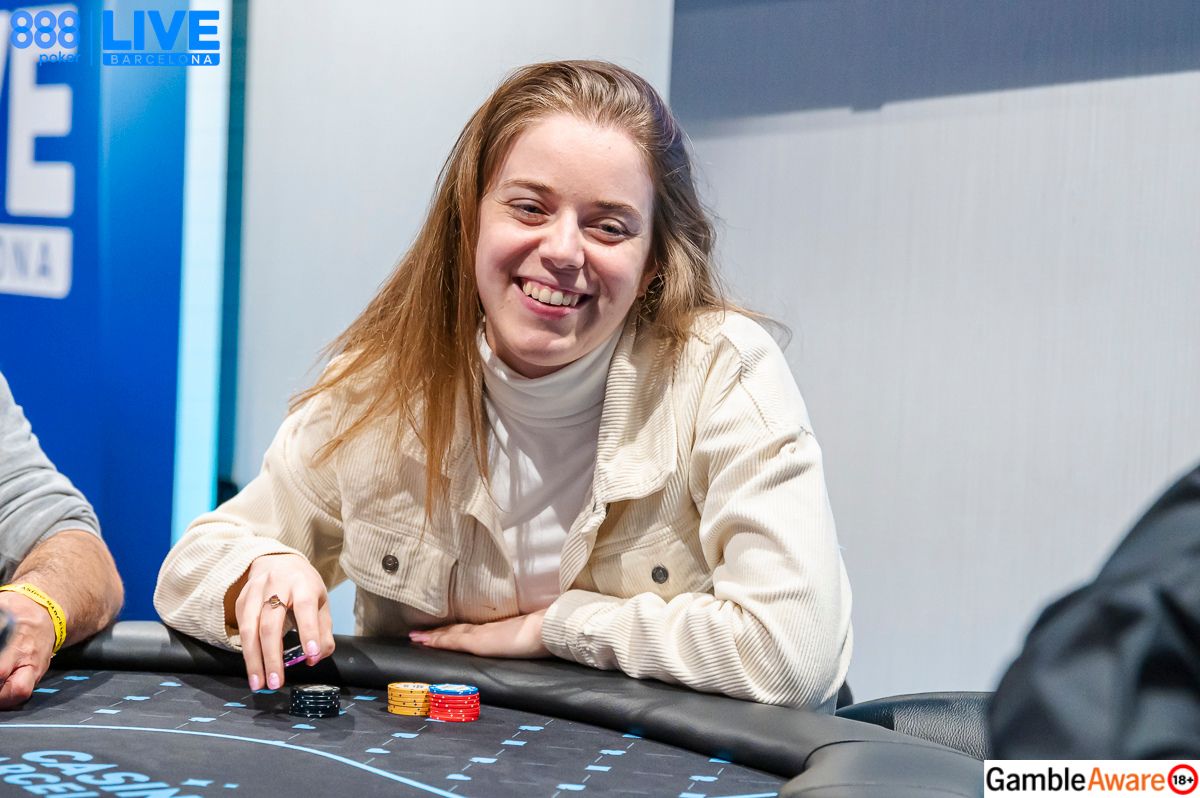Updated on April 17, 2025
What is the Hijack in Poker?
Before answering this question, we need to back up a little — to the concept of position.
Position in poker is where you sit at the table.
Each seat has a different name, and some positions are better than others in terms of profitability and ability to win more.
So, what is “hijack in poker”? It is the name of one of the more advantageous poker seat positions.
Where is the Hijack?
Now that you know that the hijack is a seat name, you want to transition from asking what is the hijack in poker to where is hijack in poker.
When learning how to play poker, you should know that the hijack is two seats before the button.
Or, to make it simpler, here’s an organized list:
Here are the names and poker definitions of the positions:

- BUTTON– this player has a white ‘Dealer’ button in front of them.
- SMALL BLIND – this player is seated to the left of the button.
- BIG BLIND – this player is seated to their left.
- UNDER-THE-GUN – this player is seated to their left. Why the scary name? Because this person is the first to act preflop – it puts maximum pressure on any poker board!
- UNDER-THE-GUN + 1 – this player is seated to their left.
- MIDDLE POSITION – this player is seated to their left.
- LOJACK – this player is seated to their left.
- HIJACK – this player is seated to their left or two places right of the button.
- CUTOFF – this player is seated to their left or one place right of the button.
Here is the order of poker seat positions ranked from worst to best:
- Small Blind
- Big Blind
- Under-the-gun
- Under-the-gun + 1
- Middle Position
- Lojack
- Hijack
- Cutoff
- Button
Notice a pattern? The worst to best seat positions go in order! The sooner you must make your decisions in a poker hand, the worse your position is.
You can read more on this in our article here: Poker Positions Poker Explained: A Beginner's Complete In-Depth Guide

How Should We Play in the Hijack?
High jack poker is a mix between playing tight and loose. You don't want to play too wild because other players who could have monster hands are still waiting to act after you. You don't want to be caught off-guard.
Yet it is still one of the more advantageous seats because you are on the verge of acting in a late position. Due to poker hands probability, you can start to widen your preflop raising range ever so slightly.
For example, raising with a pair of eights is scary when you're the first player to act — Under-the-Gun. There's a good chance someone behind you will have a stronger pair or hand.
Imagine if everyone else has folded to you in the hijack, looking down at that pair of eights. Should you raise it? Absolutely!
Since only a few players are left to act — the Cutoff, Button, and Blinds — there's a good chance that your pocket eights are the best hand.
It’s much easier to beat a few people than a table full of people.

How Wide Should We Open-Raise from the Hijack?
Good GTO poker players typically open the top 18% of hands from the hijack. You can open-raise wider if the Button/Cutoff are overly tight or there are weaker players in the blinds.
While 18% doesn’t seem like a lot, it’s much better than one of the earliest positions… there you’d only want to play the top 10% of hands!
Plus, you can loosen up and deviate slightly if the players behind you are not going to put you to tough decisions.
Why is Calling from the Hijack Problematic?
High jack poker can be exciting because it’s the starting point where we get position on other players. You’ll notice a difference in being able to open-raise more hands.
However, calling in the hijack is not nearly as fun.
There are two major issues:
- When someone raises in front of the hijack from an early or middle position, they are likely to have a strong hand.
- When you call a raise from the hijack, the players in the Button or Cutoff might call — both would have position on you post-flop

Navigating the hand is confusing if the Button or Cutoff calls behind you. To make matters worse, getting paid off if they’re in the hand will be more challenging, too. When you bet in front of players, it will feel awkward and be extremely obvious you have a good hand.
Executing a poker bluff will also be more tricky because you might get called by the players behind you.
And, while you can open-raise wider from the hijack, you should call much tighter.
Why is it Called the Hijack Position?
If no one has raised by the time the button acts, the button might raise a speculative holding (think: junky cards). They realise that it’s unlikely anyone else has a very strong hand.
So, the theory goes like this:
- The button raises with medium or lousy cards because everyone else seems disinterested.
- The cutoff, aware of this plan, may ‘cut them off’ and raise first!
- OR the player in the hijack seat, aware of the cutoff’s plan to cut off the button, will hijack the cutoff by raising before them!
That’s why we have the seat sequence of hijack, cutoff, and button
Conclusion: Why the Hijack in Poker Seat Matters

The hijack is a powerful strategic position, right on the edge between early and late position play. While you still need to exercise caution — especially against aggressive players behind you — the hijack gives you more freedom to raise with a BRIADER range of hands.
It’s a seat where strong players can take control in most types of poker games, applying pressure, stealing blinds, and capitalising on their positional advantage.
Understanding how and when to raise, as well as when to avoid calling from the hijack, can make a big difference in your long-term results at the table.
So, the next time you find yourself in the hijack — REMEMBER it’s a prime opportunity to “hijack” the action and take control of the hand.


